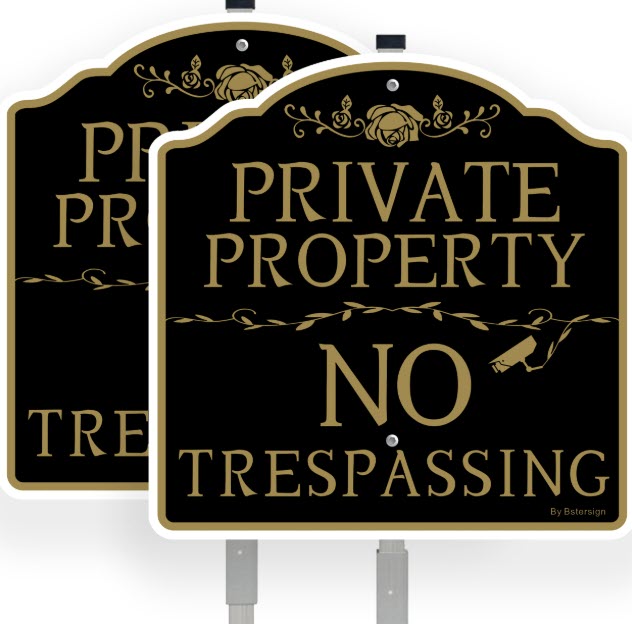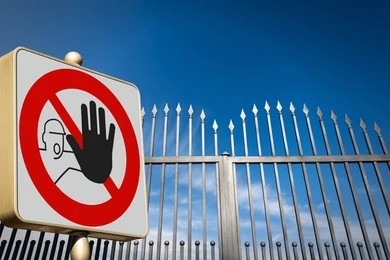Trespass signs – What really protects you?
Florida’s No Trespassing signs are like the “Keep Out” signs you might have put on your bedroom door as a kid, but with a lot more legal muscle. According to Florida law, these signs must follow specific rules, including being a certain size and having text big enough to read from a distance, to make sure trespassers know they’re not welcome.
Florida Statute 810.011 Compliance

Florida Statute 810.011 is like a rulebook for “No Trespassing” signs, ensuring they’re as clear as a referee’s whistle at a football game. To comply:
- Signs must be placed no more than 500 feet apart along property boundaries, like fence posts.
- Text must shout “NO TRESPASSING” in letters at least 2 inches high, about as tall as your thumb.
- Include the owner’s name, like putting your name on your lunchbox.
- For a DIY approach, you can paint notices on trees or posts using bright orange paint, making them stand out like a traffic cone.
Remember, proper signage is your property’s bouncer, legally keeping unwanted visitors out.
Material Options for Durability
When it comes to durability, choosing the right material for your No Trespassing signs is crucial—think of it as picking the right armor for your property. Here are the top contenders:

When it comes to durability, choosing the right material for your No Trespassing signs is crucial—think of it as picking the right armor for your property. Here are the top contenders:
- Aluminum: The MVP of sign materials, aluminum is rust-proof, weather-resistant, and can handle anything from blazing sun to torrential rain. It’s lightweight yet sturdy, making it perfect for outdoor use and long-term durability.
- Plastic: A budget-friendly option, plastic signs are lightweight and resistant to cracking or bending. While they hold up well in moderate conditions, they may not last as long in extreme weather.
- Reflective Aluminum: Ideal for nighttime visibility, this material combines aluminum’s durability with a reflective coating, ensuring your sign gets noticed even in low light.
- Corrugated Plastic (Yard Signs): These are cost-effective and versatile but best for short-term use since they can fade or degrade faster than other options.
- Vinyl or Adhesive Decals: Great for temporary or supplementary signage, these are easy to apply but less durable against harsh elements.
For maximum longevity, aluminum signs with UV-resistant coatings or anti-graffiti laminates are your best bet—they’re like the all-weather tires of signage.
Customizing Signs with Owner Details

Customizing your No Trespassing signs with owner details is like adding your personal signature to a “Keep Out” message. In Florida, it’s not just a nice touch—it’s the law. Here’s how to personalize your signs:
- Include your full name or the name of your business.
- Add your address if required by local regulations.
- Consider including a phone number for contact purposes
- Use clear, legible fonts—think billboard-style readability
- Avoid using nicknames or abbreviations to ensure legal validity
Remember, these details aren’t just for show. They’re like your property’s ID badge, helping law enforcement identify who owns the land and potentially strengthening your case if someone trespasses. Just be sure to balance visibility with privacy—you’re posting a warning, not an invitation for unwanted correspondence.



